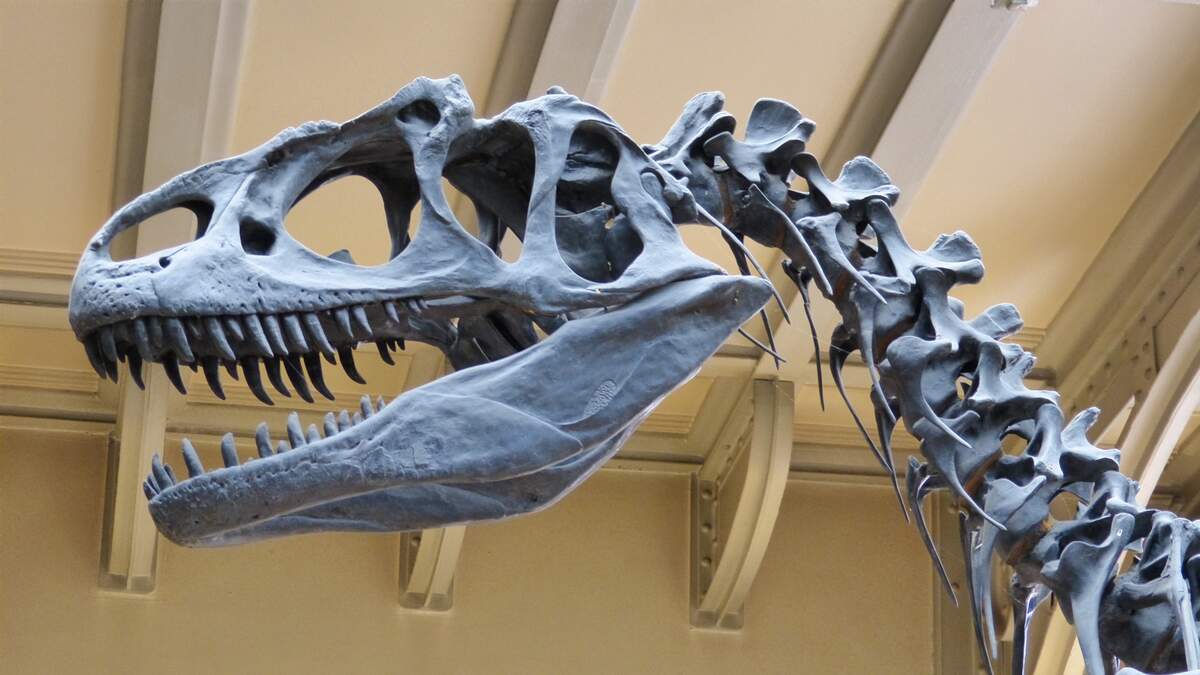

Dinosaur Day
Also known as
International Dinosaur Day
Observed
the third Tuesday in May
annually on June 1st
Dates
May 16th, 2023
June 1st, 2023
May 21st, 2024
June 1st, 2024
May 20th, 2025
June 1st, 2025
May 19th, 2026
June 1st, 2026
May 18th, 2027
June 1st, 2027
Hashtags
Sources
https://web.archive.org/web/20211127051222/http://www.gone-ta-pott.com/national_animal_holidays.html
https://www.amnh.org/dinosaurs/dinosaur-facts/
https://www.britannica.com/animal/dinosaur
https://www.history.com/topics/dinosaurs-an-introduction
https://www.wheniscalendars.com/when-is-dinosaur-day-2/
https://www.wikidates.org/wwholidays/dinosaur-day-2018.html
Today we celebrate those large, extinct reptiles: dinosaurs. Scientists believe they first appeared about 245 million years ago, at the beginning of the Middle Triassic Epoch, and existed for about 180 million years, going extinct about 66 million years ago, at the end of the Cretaceous Period. The period when they lived is called the Mesozoic Era. During this time they went through many changes, and various species of dinosaurs replaced other species. Some dinosaurs were bipedal, meaning they walked on two legs, and some were quadrupedal, meaning they walked on all fours. Some switched back and forth. Some were covered with feathers, while others had what was almost like body armor. Some ran fast, and others were slow; most were herbivores, but some were carnivores. There were at least 700 species of dinosaurs, and possibly more than 1,000.
There were big biotic changes at the end of the Cretaceous Period, and many other animals and plants died at that time as well. There are many theories as to why dinosaurs died out, including disease, heat waves, cold spells, changing sea levels, a large amount of volcanic activity, the emergence of egg-eating mammals, or from X-rays from an exploding supernova. One other common theory is that an asteroid smashed to earth, spread ash widely, and shifted the earth's climate. However, it is not believed that all dinosaurs died out at the same time. Rather, it is believed they had been declining during the last part of the Cretaceous Period. Scientists also believe that some dinosaurs may have evolved into birds.
Richard Owen, an English anatomist, came up with the word "Dinosauria" in 1842. The word comes from the Greek word "deinos," meaning terrible or fearfully great, and "sauros," meaning reptile or lizard. He applied the term to three animals that fossilized bones had been found of over the previous few decades. The remains came from reptiles that were both larger and had more vertebrae than any found before. The earliest known published record of dinosaur remains was in 1820, and many fossils were found in the 1820s and 1830s. Many other kinds of dinosaurs were found in the years following the 1842 naming as well. Fossils of dinosaurs have now been found on all seven continents.
How to Observe Dinosaur Day
The best way to celebrate the day is to visit a museum or other dinosaur-related attraction, where fossils or bones may be viewed. You could also watch a documentary about dinosaurs, or a film that features dinosaurs, such as Jurassic Park. If you have children, there are many dinosaur-related activities they could do today.





















